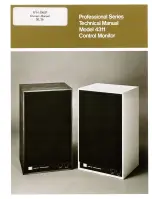
CC2500
SWRS040C
Page 27 of 89
13 Receiver Channel Filter Bandwidth
In order to meet different channel width
requirements, the receiver channel filter is
programmable. The
and
configuration registers
control the receiver channel filter bandwidth,
which
scales
with
the
crystal
oscillator
frequency. The following formula gives the
relation between the register settings and the
channel filter bandwidth:
E
CHANBW
XOSC
channel
M
CHANBW
f
BW
_
2
)·
_
4
(
8
For
best
performance,
the
channel
filter
bandwidth should be selected so that the
signal bandwidth occupies at most 80% of the
channel filter bandwidth. The channel centre
tolerance due to crystal accuracy should also
be subtracted from the signal bandwidth. The
following example illustrates this:
With the channel filter bandwidth set to 600
kHz, the signal should stay within 80% of 600
kHz, which is 480 kHz. Assuming 2.44 GHz
frequency and ±20 ppm frequency uncertainty
for both the transmitting device and the
receiving
device,
the
total
frequency
uncertainty is ±40 ppm of 2.44 GHz, which is
±98 kHz. If the whole transmitted signal
bandwidth is to be received within 480 kHz,
the transmitted signal bandwidth should be
maximum 480 kHz – 2·98 kHz, which is 284
kHz.
The
CC2500
supports the following channel
filter bandwidths:
Table 20: Channel Filter Bandwidths [kHz]
(assuming a 26 MHz crystal)
14 Demodulator, Symbol Synchronizer and Data Decision
CC2500
contains an advanced and highly
configurable demodulator. Channel filtering
and
frequency
offset
compensation
is
performed digitally. To generate the RSSI level
(see Section 17.3 for more information) the
signal level in the channel is estimated. Data
filtering
is
also
included
for
enhanced
performance.
14.1
Frequency Offset Compensation
When
using
2-FSK,
GFSK,
or
MSK
modulation, the demodulator will compensate
for the offset between the transmitter and
receiver frequency, within certain limits, by
estimating the centre of the received data.
This value is available in the
status
register. Writing the value from
FREQEST
into
the
frequency
synthesizer
is
automatically
adjusted
according to the estimated frequency offset.
The
tracking
range
of
the
algorithm
is
selectable
as
fractions
of
the
channel
bandwidth
with
the
configuration register.
If the
bit is set,
the offset compensator will freeze until carrier
sense asserts. This may be useful when the
radio is in RX for long periods with no traffic,
since the algorithm may drift to the boundaries
when trying to track noise.
The tracking loop has two gain factors, which
affects the settling time and noise sensitivity of
the algorithm.
sets the
gain before the sync word is detected, and
selects the gain after
the sync word has been found.
Note that frequency offset compensation is not
supported for OOK modulation.
14.2
Bit Synchronization
The bit synchronization algorithm extracts the
clock
from
the
incoming
symbols.
The
algorithm requires that the expected data rate
is programmed as described in Section 12 on
page 26. Re-synchronization is performed
continuously to adjust for error in the incoming
symbol rate.
MDMCFG4.
MDMCFG4.CHANBW_E
CHANBW_M
00
01
10
11
00
812
406
203
102
01
650
325
162
81
10
541
270
135
68
11
464
232
116
58
Summary of Contents for CC2500
Page 91: ...PACKAGE OPTION ADDENDUM www ti com 6 Feb 2020 Addendum Page 2 ...
Page 94: ......
Page 95: ......















































